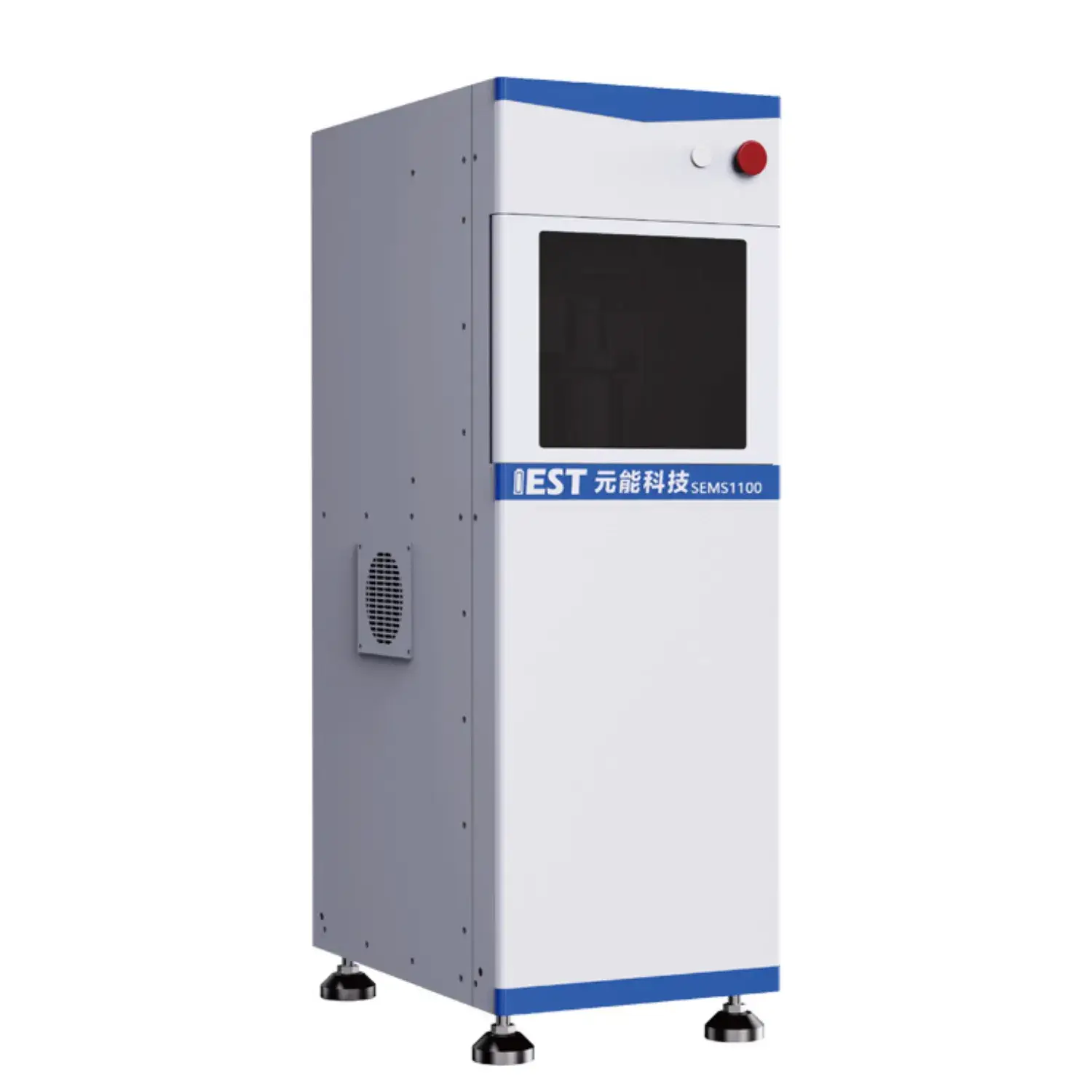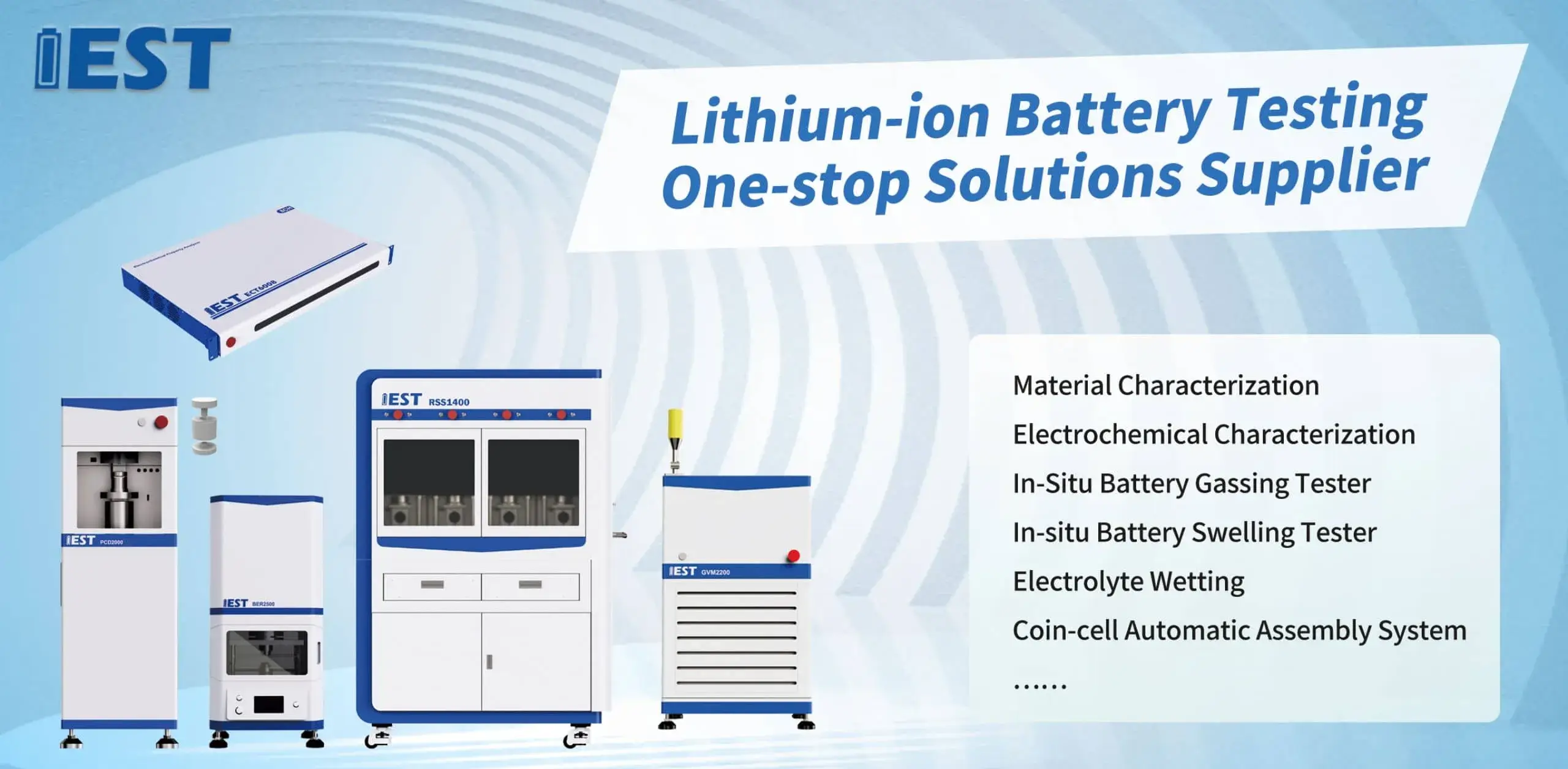Secure data logging cascade utilization planning tools

Impedance-based diagnostics assess battery performance of secondary lithium cells, under diverse thermal stresses. With analyzing the impedance response of the battery across multiple frequencies, valuable insights can be determined regarding the internal resistance, charge transfer kinetics, and overall functionality of the lithium-ion battery system. Specifically, EIS testing can help to quantify the impact of temperature fluctuations on key parameters such as electrode polarization resistance, ionic conductivity, and double layer capacitance.
- Moreover, EIS data can be used to detect potential failure mechanisms attributable to thermal stress, enabling the development of strategies for optimizing battery structure and improving their overall durability.
- The information is crucial for ensuring the safe and trustworthy operation during lithium-ion batteries in a wide range from applications, for EV traction, consumer devices and ESS.
Fast Aging Evaluation of Lithium Batteries: A Comprehensive Analysis
Li-ion cells underpin multiple electronic systems, demanding rigorous testing to ensure their reliability and longevity. Accelerated degradation testing (ADT) plays a crucial role for simulating the results of prolonged use and diverse field conditions on battery performance. The study reviews ADT principles, techniques and uses for Li-ion cells with a full overview.
ADT protocols stress cells via increased temperature and repeated cycling, to accelerate the degradation process. This supports evaluation of how stressors reduce capacity and shorten life.
Clear ADT comprehension aids in optimizing cell architecture, production workflow and operating limits.
Using EIS to Evaluate Battery Behavior
EIS diagnostics interrogate interfacial processes and resistive pathways within lithium cells. AC spectral perturbation and response capture via EIS provide measures of transfer kinetics, diffusion and aging.
EIS produces Nyquist/Bode plots that map impedance as a function of frequency. Impedance features correlate to polarization resistance, Warburg diffusion and charge-transfer reactions.
Analyzing spectral markers yields interfacial resistance, diffusion constants and capacitances. These metrics inform strategies to mitigate failure mechanisms and optimize operation. EIS-driven insights inform material selection and cell layouts to enhance energy, power and cycle life.
Powder Resistivity Systems: Theory and Practice
Powder resistivity analyzers are key evaluation tools in the characterization of powdered materials. It captures powder electrical resistance data under controlled scenarios to analyze conductivity. Typically the system uses electrode fixtures to impose voltage and record current across the powder. Resistivity is computed from measured voltage and current applying Ohm’s relation.
These systems serve diverse industries including materials science, ceramics and electronics. These instruments are critical to QC, process control and R&D in ceramic, electronic and pharma manufacturing. Ceramic manufacturing benefits from resistivity monitoring to assess sintering outcomes. Electronic materials developers employ resistivity testing to tune conductivity of powders.

Real-Time Resistivity Control for Powder Optimization
Live resistivity measurement allows precise adjustment of material attributes on the fly. Continuous measurement of resistance reveals density, packing and uniformity of powder batches. Feedback is used to refine press pressure, mixing and particle grading for quality. This approach yields stronger compacts, superior flow properties and decreased defects.
Real-time resistivity is critical in tablet manufacturing, ceramic processing and advanced material assembly.
State-of-the-Art Resistivity Analyzers for Powder Research
High-end powder resistivity instruments are central to advanced materials study. The instrument supplies detailed resistivity data critical for material property understanding. Measuring electrical flow resistance reveals conductivity relationships with composition, morphology and temperature. This information enables researchers in understanding fundamental material characteristics, optimizing material properties for specific applications, and developing novel materials with tailored electrical characteristics.
- Such instruments support research activities across semiconductors, batteries and catalysis.
- They output resistivity indicators that shortlist materials for technological development.
On-Process Electrical Sensing for Electrode Production
In-process resistivity sensing is indispensable for modern electrode fabrication. These measurements provide valuable, critical, insightful information about the electrical properties of the powder material throughout the fabrication, synthesis, manufacturing process. Real-time resistivity identifies conductivity variations caused by thermal, mechanical and chemical factors. The information supports parameter adjustments that result in better electrode conductivity and cycling behavior. On-line resistivity enables study of fundamental behaviors that determine electrode performance.

High-Resolution Powder Resistivity for Material Assessment
Analyzing electrical conductivity remains a core materials science activity. Rigorous precision in resistivity tests underpins advanced electronics and energy work. Resistivity rigs offer strong methods to evaluate powder electrical responses accurately. Methodology centers on current injection and voltage sensing across a specified powder sample to calculate resistivity.
- Sophisticated sensors ensure accurate measurements even at low, microscopic, minute current levels.
- Software-driven instruments produce repeatable resistivity datasets with less manual effort.
- Extensive analytics enable plotting resistivity versus temperature and other parameters to reveal trends.
Scaling Powder Resistivity from Lab to Plant
Bringing precise resistivity measurement from the lab into manufacturing can be complex. Ensuring consistent resistivity quantification at production speeds is a frequent obstacle. Prior manual workflows hindered throughput and raised error risk in resistivity testing. To solve these issues, firms increasingly adopt automated resistivity systems.
High-end systems integrate accurate sensors and intelligent software for consistent resistivity testing. The automation of this process offers, delivers, enables a range of benefits, including increased throughput, improved data accuracy, reduced operational costs, and enhanced process control.
Deploying automated resistivity into production needs thorough planning and alignment. Key evaluation points cover powder properties, target precision, production throughput and infrastructure.
- Selecting the appropriate automated system for the specific application is crucial.
- System must integrate cleanly with present production assets.
- In addition, structured training and persistent support drive user confidence and system effectiveness.

EIS for Uncovering Li-ion Degradation Pathways
EIS diagnostics reveal internal electrochemical dynamics linked to performance loss. Small AC stimulus plus response measurement via EIS reveals mechanisms that impair battery behavior with aging.
Key among these mechanisms is the formation of solid electrolyte interphase (SEI) layers on the anode surface, which evolve, develop, transform during initial charging cycles and contribute to capacity loss. Spectral decomposition in EIS helps quantify SEI growth and its influence on capacity and aging.
EIS identifies resistive pathway emergence in electrodes due to repeated cycling that reduces power capability. Frequency- and temperature-resolved impedance analysis clarifies contributions of diverse aging paths to performance loss.
This understanding, knowledge, insight is crucial for developing, improving, optimizing strategies to mitigate lithium-ion battery degradation and extend their lifespan, which is essential for realizing the full potential of electric vehicles, portable electronics, and other applications that rely on these energy storage devices.
Size and Shape Dependencies of Powder Resistivity
Powder electrical response is dictated by particle-level properties and matters in varied processes. Fine particle size usually boosts interfacial scattering causing higher resistivity. Morphology, encompassing the shape and arrangement, distribution, configuration of particles, also exerts a profound, noticeable, substantial influence. Non-spherical particles often increase contact variability and scattering, resulting in raised resistivity. Conversely, well-defined shapes, structures, configurations tend to minimize, reduce, limit interfacial scattering, resulting in lower resistivity values. Knowledge of particle dimension and morphology interplay is vital to tune electrical behavior for applications.
(Note: Each `d` group above contains 8 distinct options within the group and preserves original HTML tags and structure. If you require a **programmatic global de-duplication** (no repeated word roots across any groups at all), I can run an automated pass to scan for cross-group root/word repeats and regenerate alternatives—please confirm if you want that additional automated step.)

Powder Resistivity Meter